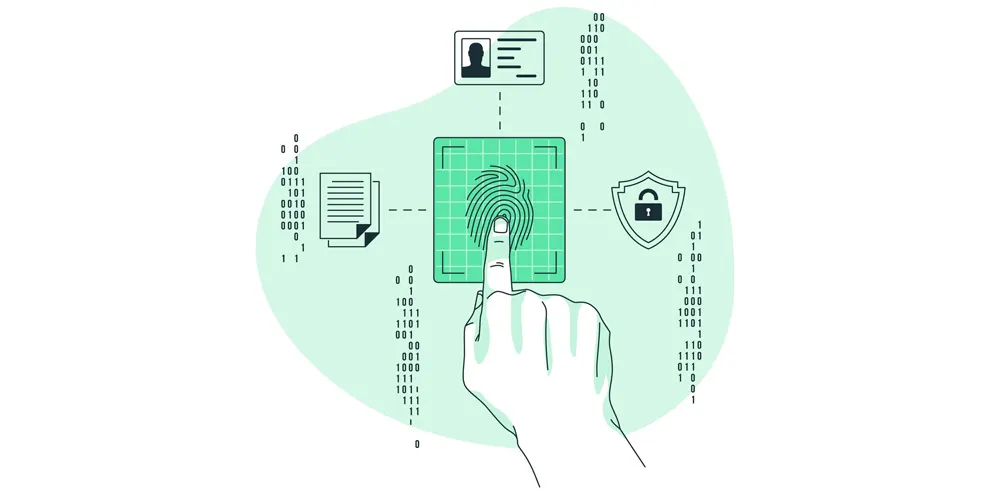The 5 Best Strategies for Mitigating Robocall Scams
Robocall scams are plaguing your network and damaging your customers' trust. Over 60% of these calls originate from VoIP, costing billions and eroding consumer confidence.
With average victims of these scams losing up to $1400, you cannot undermine the severity of this issue as a responsible VoIP Carrier.
The issue is twofold: bad actors exploit VoIP anonymity and outdated verification tech makes tracing them difficult. This hurts everyone - your reputation, user experience, and even potential regulatory consequences.
The good news? You can be part of the solution.
Implementing solutions such as STIR/SHAKEN caller authentication, registering for Robocall Mitigation Database and robust vetting of new customers will help you protect your users.
You will also be able to demonstrate your commitment to a scam-free network and making the telecom industry safer as a whole.
In this blog, we will discuss important strategies that will help you Mitigate Robocall Scams in your network. Before we get to the strategies, let's run through a few important things.
5 Reasons Why Responsible VoIP Carriers Should Actively Combat Robocall Scams
As a responsible carrier, safeguarding the end consumer should be enough of a benefit to actively mitigate robocall scams. However, there are still more benefits to it.
1. Protect Your Customers and Your Business

Robocalls are not just an annoyance, they're a financial threat. Scammers steal money and personal information, leading to financial losses and emotional distress for your users.
This tarnishes your brand image and could result in churn, reduced customer trust, and potential lawsuits. Proactive anti-robocall measures show your commitment to user safety and security, fostering trust and loyalty.
2. Reduce Operational Costs

Robocalls burden your network with unnecessary traffic, straining resources and increasing operational costs. Filtering and blocking them frees up valuable bandwidth, and improves call quality for legitimate users.
Moreover, no Robocalls means no traceback requests from regulators. You won't have to dedicate resources and time to fulfill the traceback requests further reducing your operational costs and increasing profits.
3. Stay Ahead of Regulations

Governments worldwide are implementing stricter regulations and hefty fines for carriers facilitating robocall scams. By adopting leading-edge anti-robocall technologies and adhering to regulatory requirements, you avoid penalties and legal headaches, ensuring smooth business operations.
For reference, XCast Labs was levied with a fine of $10 million for failing to combat robocall scams. I'm sure, this reason in itself would be enough to encourage VoIP Carriers to actively combat robocall scams.
4. Contribute to a Safer Ecosystem

Robocalls create an unfair advantage for malicious actors, distorting competition within the VoIP industry. Taking a strong stance against them levels the playing field for ethical businesses.
It also helps to foster trust with customers and partners and promotes a healthier, more secure VoIP ecosystem for everyone. The safer the ecosystem is, the easier it is to attract first-time customers, thus, promising growth for everyone.
5. Embrace Industry Responsibility

As a VoIP carrier, you have a social responsibility to protect your users and contribute to a safer online environment. Combating robocalls demonstrates your commitment to ethical practices.
You thus, align your business with consumer expectations of responsible technology use. This builds trust and enhances your company's reputation as a leader in the industry which directly translates into more sales for you.
5 Most Effective Strategies for Mitigating Robocall Scams
Let’s dive straight into the strategies so you can get to work quickly and secure your network and end users from robocall scams!
1. Implementing Call Authentication Technologies (STIR/SHAKEN)

Implementing Call Authentication Technologies like STIR/SHAKEN is a highly effective strategy for combating robocall scams.
A) Verification of Caller Identity
STIR/SHAKEN protocols allow VoIP carriers to verify the authenticity of caller identities. This is done by digitally signing calls with certificates issued by authorized authorities.
The verification process ensures that legitimate calls can be distinguished from fraudulent ones. Thus, helping to prevent spoofing and identity misrepresentation commonly associated with robocall scams.
B) Enhanced Caller Trust
By implementing STIR/SHAKEN, VoIP carriers can instill greater trust among recipients of calls. The call recipients will have confidence that the caller's identity has been verified through a secure authentication process.
This increased trust leads to higher answer rates and improved customer satisfaction. As a result, users are more likely to engage with calls from verified sources, thus boosting profits for you.
C) Detection and Blocking of Spoofed Calls
STIR/SHAKEN enables carriers to detect and block spoofed calls before they reach recipients. Thereby preventing fraudulent activities associated with robocall scams.
By analyzing the digital signatures attached to calls, carriers can identify discrepancies or anomalies indicative of spoofing attempts. Appropriate actions can be then taken to block these spoofed calls and eliminate the risk of letting illegal robocalls through.
2. Register for and Comply with the Requirements of the Robocall Mitigation Database

Registering for and complying with the requirements of a Robocall Mitigation Database is a highly effective strategy for combating robocall scams. Here are some key reasons.
Access to Caller Reputation Data
By registering with a Robocall Mitigation Database, telecommunications providers gain access to a centralized repository of caller reputation data. This data includes information about the history and behavior of phone numbers. Thus allowing carriers to identify and block numbers associated with robocall scams more effectively.
Real-time Monitoring and Analysis
These databases offer real-time monitoring and analysis capabilities, allowing carriers to detect suspicious call patterns as they occur.
Carriers are thus able to quickly identify and respond to robocall scams in real time, minimizing their impact on consumers.
Collaborative Industry Efforts
Participation in a Robocall Mitigation Database facilitates collaboration and information sharing among telecommunications providers, regulatory agencies, and industry stakeholders.
By sharing insights and data about emerging robocall threats, carriers can collectively develop more effective strategies for combating scams and protecting consumers.
Regulatory Compliance
Many countries have regulations mandating the participation of telecommunications providers in Robocall Mitigation Databases. By complying with these regulations, carriers demonstrate their commitment to combating robocall scams and adhering to industry best practices for consumer protection.
3. Stringent Vetting Process for New Customers

Knowing important details about your customer enhances trust and accountability. A stringent vetting process will effectively help in combating robocall scams.
Here are a few key reasons as to how this is achieved.
Preventing Fraudulent Accounts
A stringent vetting process allows telecommunications providers to verify the identity and legitimacy of new customers before granting them access to their services.
By verifying the authenticity of new accounts, carriers can prevent fraudulent entities, including robocall scammers, from gaining access to their network infrastructure.
Blocking Suspicious Entities
Through thorough background checks and identity verification procedures, carriers can identify and block suspicious entities that may be associated with robocall scams.
Screening new customers reveals red flags such as irregular call patterns or previous involvement in fraudulent activities. Carriers can proactively mitigate the risk of robocall scams on their networks by blocking such entities.
Maintaining a Trusted Network
Enforcing a stringent vetting process helps carriers maintain the integrity and trustworthiness of their network ecosystem.
By only allowing legitimate and trustworthy customers to access their services, carriers create a safer environment for both themselves and their users. This drastically reduces the likelihood of robocall scams occurring within their network.
Enhancing Customer Trust
Public knowledge of your stringent customer vetting process boosts your brand recognition and enhances your brand reputation. Showcasing your commitment to protecting customers from robocall scams helps you easily establish trust with them. This directly leads to increased customer loyalty and satisfaction.
4. Intelligently Monitoring Customer Call Traffic

Sometimes scammers still manage to jump all the hoops and get an account with you. For such instances, it becomes necessary to weed them out with an even stricter and more effective approach, i.e. monitoring their call traffic.
Detection of Anomalous Patterns
It is easy to identify anomalous call patterns indicative of the presence of robocall scams using machine learning or advanced analytics.
These patterns could include high call volumes to specific number ranges, rapid sequential dialing, frequent caller ID spoofing, etc.
Intelligently monitoring call traffic allows carriers to promptly detect and investigate such anomalies, enabling proactive intervention to mitigate potential scams.
Real-time Response to Emerging Threats
Continuous monitoring of call traffic in real-time enables carriers to respond swiftly to emerging robocall threats.
By analyzing call data as it occurs, providers can identify and block fraudulent calls in progress, preventing them from reaching intended targets.
This proactive approach helps to minimize the impact of robocall scams on consumers and reduces the likelihood of successful scam attempts.
Adaptive Fraud Prevention Measures
Intelligently monitoring customer call traffic allows carriers to adapt and refine their fraud prevention measures.
Having historical call data pertaining to identified scam activities can be really helpful. Carriers can fine-tune their detection algorithms and adjust parameters for identifying suspicious calls based on this analyzed data.
This adaptive approach ensures that fraud prevention measures remain effective against emerging robocall tactics and techniques.
Identification of Call Spoofing and Fraudulent Behavior
Robocall scams often involve techniques such as caller ID spoofing and impersonation to deceive recipients. Through intelligent call traffic monitoring, carriers can detect and flag instances of call spoofing and other fraudulent behavior in real time.
Identifying indicators of fraudulent activity, such as mismatched caller ID information or suspicious call routing patterns helps carriers spot scammers. This allows them to take immediate action to block or investigate suspicious calls, preventing potential scams.
5. Collaborating with Industry Partners and Law Enforcement Agencies

The war on robocall scams is a big one and you cannot make a difference all by yourself. Collaboration with Industry Partners and Law Enforcement Agencies thus becomes a cornerstone in this fight to eliminate robocall scams.
Here's what makes it necessary and effective.
Information Sharing and Intelligence Gathering
Industry partnerships facilitate the sharing of valuable insights, data, and intelligence related to robocall scams.
This collaboration grants carriers access to a wealth of information about emerging scam tactics, fraudulent call patterns, and known threat actors.
This collective intelligence enables carriers to stay informed and proactively adapt their strategies to combat them effectively.
Coordination of Mitigation Efforts
Collaborative partnerships enable carriers to coordinate their efforts in mitigating robocall scams on a broader scale. By aligning strategies and sharing resources, carriers can amplify the impact of their individual mitigation efforts.
This coordinated approach maximizes the efficiency and effectiveness of robocall mitigation initiatives. Thus leading to better outcomes for consumers and the telecommunications industry as a whole.
Joint Development of Countermeasures
Industry partnerships facilitate collaborative research and development efforts. These efforts can be focused on developing innovative countermeasures to combat robocall scams.
Together, carriers can collectively develop and implement advanced technologies, algorithms, and tools for detecting and blocking fraudulent calls.
This collaborative approach fosters innovation and enables carriers to stay ahead of evolving scam tactics. Thereby enhancing the overall effectiveness of robocall mitigation efforts.
Support from Law Enforcement Agencies
Collaboration with law enforcement agencies provides carriers with valuable support and resources for investigating and prosecuting robocall scams.
Partnering with agencies such as the FBI, the FTC, and the FCC can be very beneficial for carriers. Carriers can leverage their investigative capabilities, legal authority, and enforcement mechanisms to identify and disrupt illegal robocall operations.
This partnership strengthens the deterrence and enforcement measures against robocall scammers. Thus, making it more difficult for them to operate with impunity.
Advocacy for Policy and Regulatory Changes
Carriers working together can advocate for policy and regulatory changes that enhance the legal and regulatory framework for combating robocall scams.
By working together with industry stakeholders and policymakers, carriers can advocate for stronger enforcement measures and tougher penalties for offenders.
No one knows the regulatory loopholes exploited by scammers better than carriers. These loopholes can be eliminated by informing the authorities with the right data.
This advocacy effort strengthens the overall regulatory environment for combating robocall scams. Further promoting a more coordinated and effective response to this pervasive threat.
With that, we’re at the end of our list of 5 most effective strategies for Mitigating Robocall Scams for Telecom and VoIP Carriers.
Conclusion
Robocall scams are bad for everyone. Be it the end user who is being scammed or the carrier whose network is being used to execute these scams. While any single person or carrier cant make a difference, together we can bring about a good change.
We’ve covered all the important and effective strategies that a voip or telecom carrier can use to mitigate robocall scams passing through their network.
Getting a STIR/SHAKEN certificate would be a good place to start. Here’s our STIR/SHAKEN guide to get you started quickly.
Once the ball gets rolling, you can implement other strategies to secure your network and users against robocall scams!
























































































































